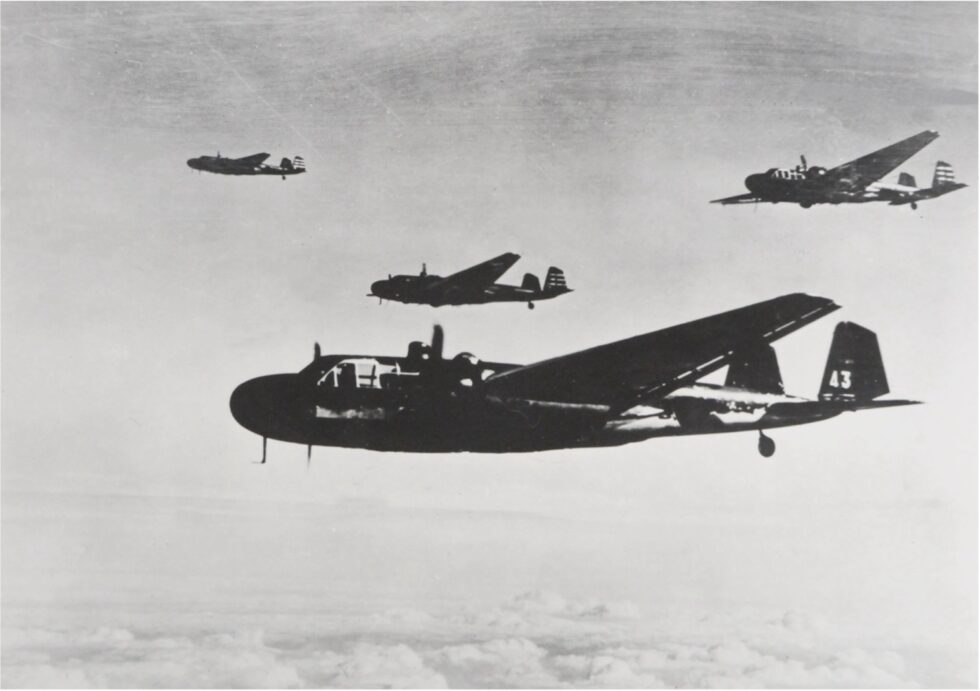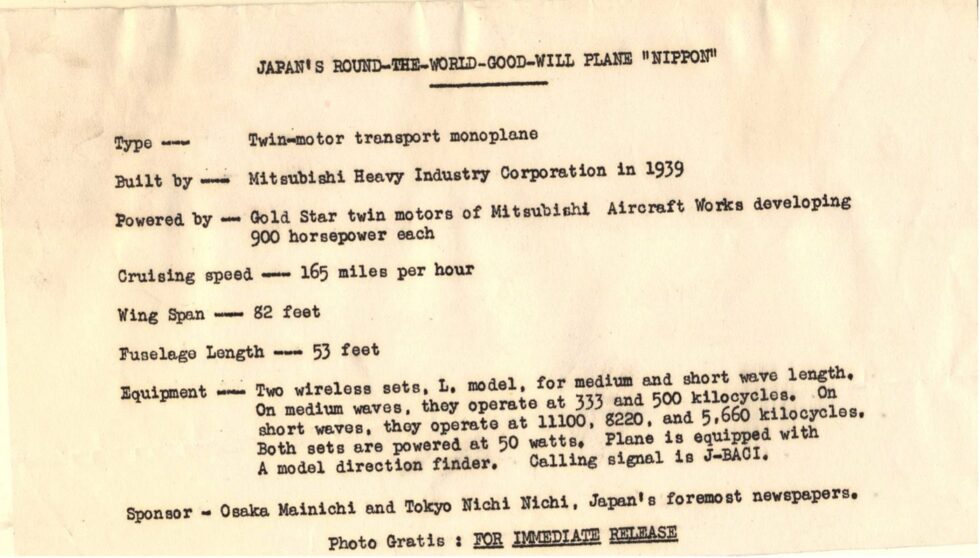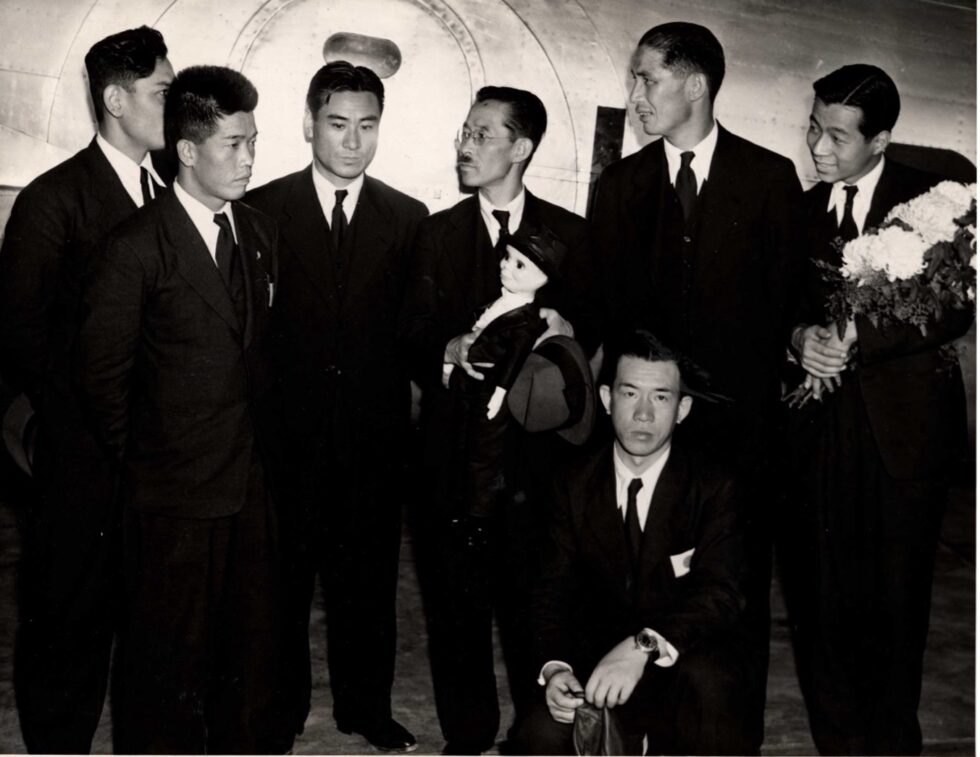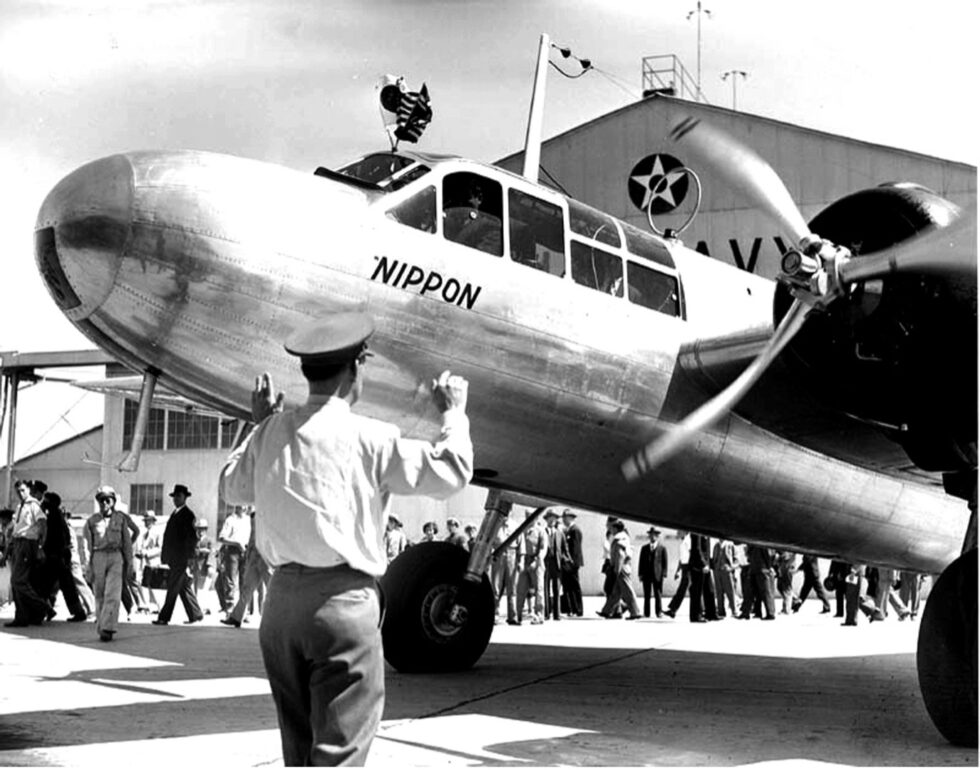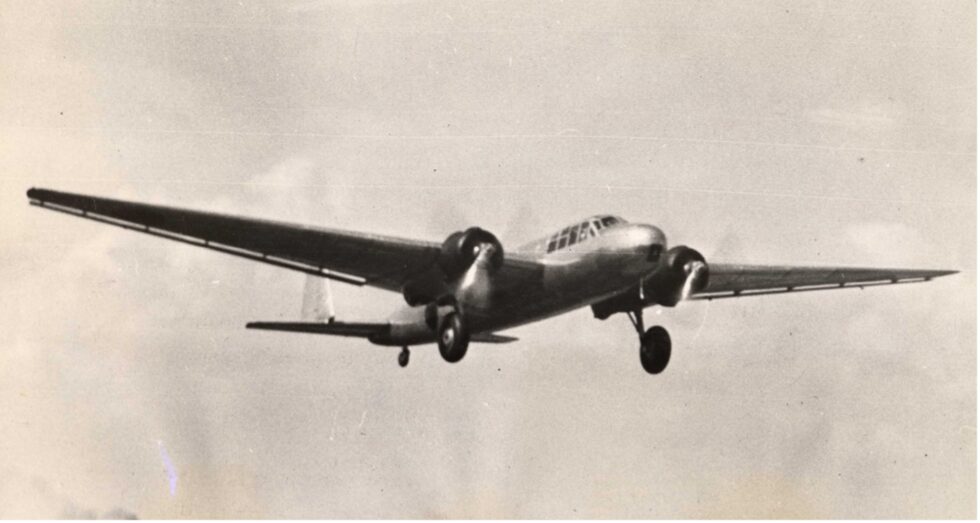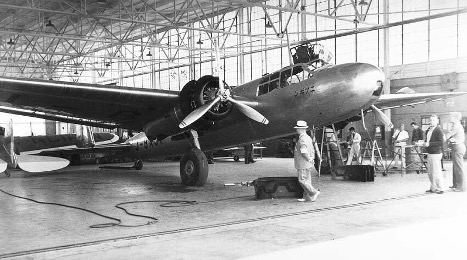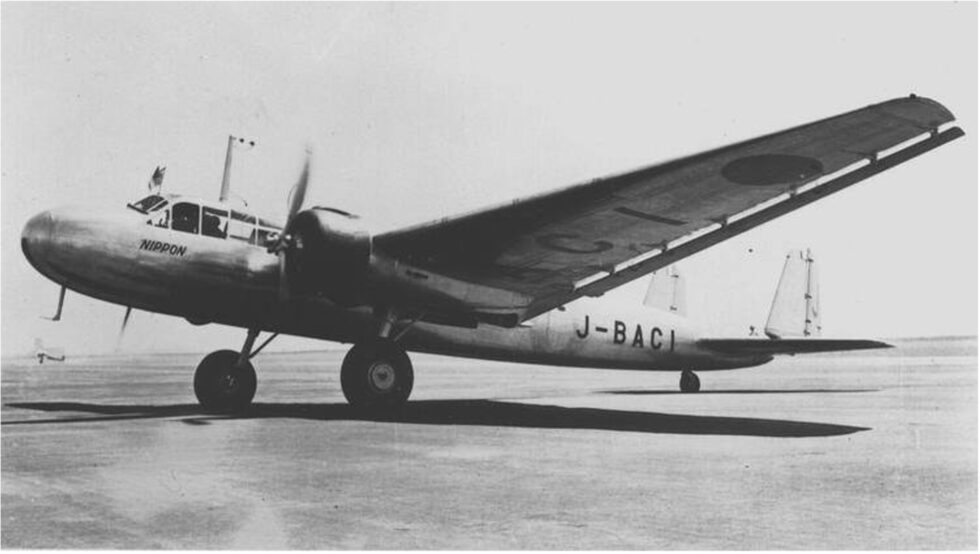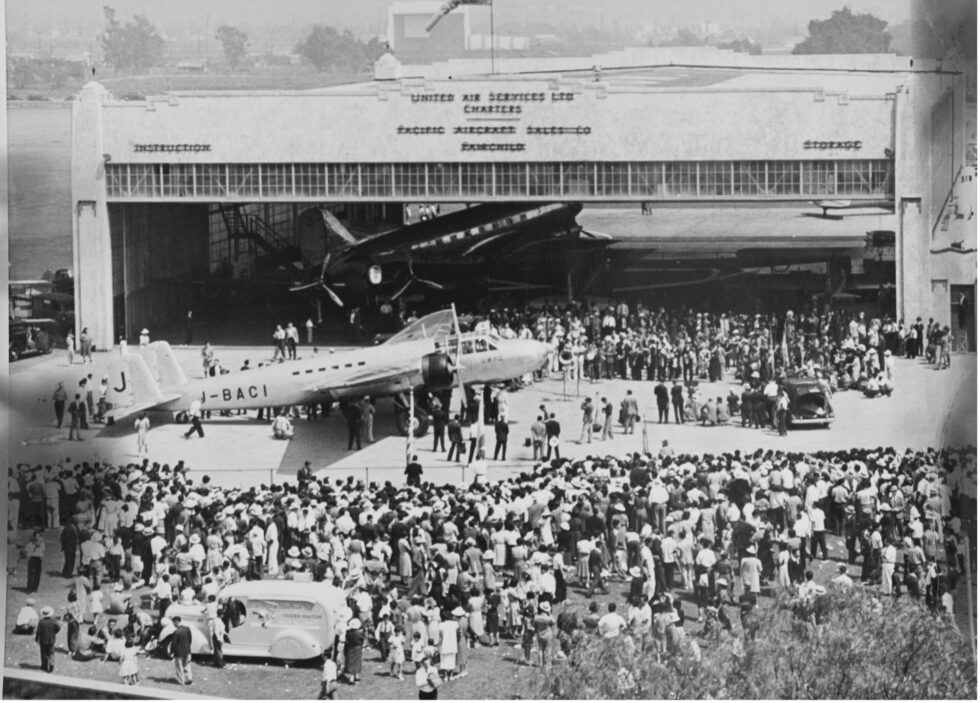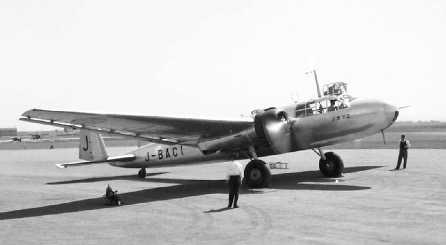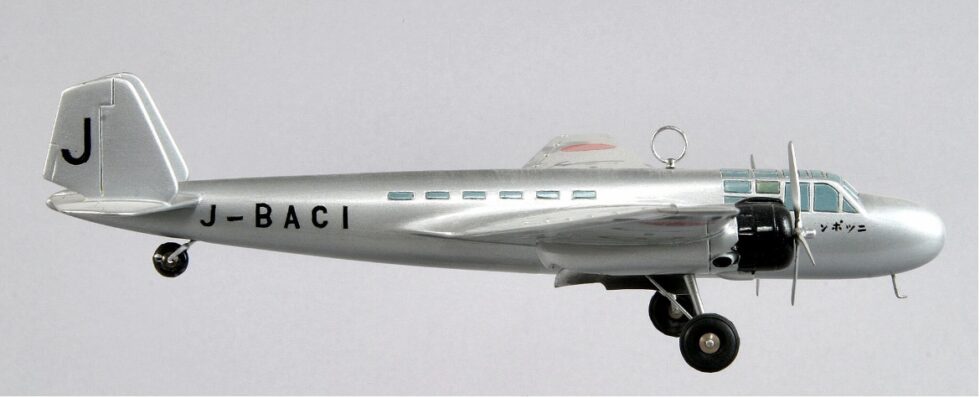Japans Mitsubishi Soyokaze 96 Nippon-Go
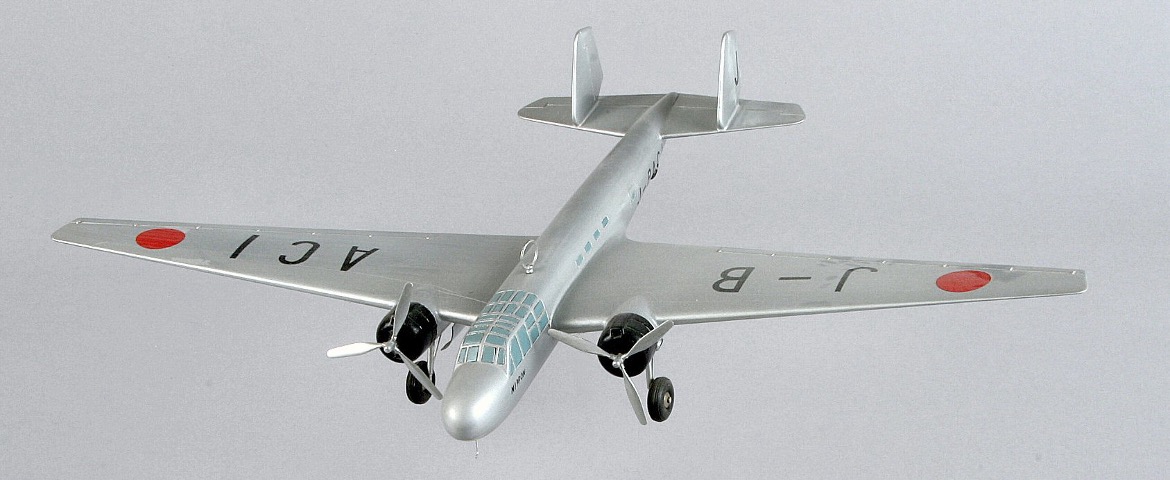
MODEL BY:
Mitsubishi
Model Scale:
1/72
MODEL ADDED:
N/A
historical significance
First Albuquerque Visit: 1939
Additional Information:
During the early 1930s the Imperial Japanese Navy initiated a request for a twin engine attack bomber. Mitsubishi Aircraft developed the Type-96 bomber designated G3M, and identified by Allied intelligence as the “NELL.” It was the first Japanese warplane to have retractable landing gear, was designed for long-range, and had capabilities that were equal to foreign made twin-engine bombers.
Two dozen of the G3M2 bombers were modified into civil transports and were flown by the Greater Japan Air Lines on domestic flights to Korea, China, Formosa, Thailand, and Japanese held islands. The aircraft were stripped of armament and windows were added to the center fuselage. A rear door was added for along with seating for eight (8) passengers.
Two Japanese newspapers, Osaka’s Mainichi and Tokyo’s Nichi-Nichi, teamed up to support a round-the-world flight with the latter actually financing the trip. Mitsubishi participated by modifying a twin-engine bomber into a special civilianized version for this event. Mitsubishi increased the internal fuel capacity by adding fuel tanks to hold an additional 308 imperial gallons of aviation grade gasoline.
The aircraft was given the Japanese registration, J-BACI, and the name NIPPON, which was painted on just under the cockpit windows. The aircraft was delivered to the flight crew in July of 1939 and extensive flight training was ongoing until the plane’s departure.
Having received permission from the U.S. State Department to land in Alaska, the NIPPON departed Chitose Naval Base in Hokkaido Japan on 27 August and flew across the Pacific to Nome, Alaska, a 2,400 mile leg of their flight, where it landed on 28 August, 1939. The crew of the NIPPON consisted of the Pilot Sumitoshi Nakao, Co-Pilot Shigeo Yoshida, Flight Engineer Hajime Shimokawa, Technician Hiroshi Saeki, Communications Officer Nobushada Sato. Mr. Takao Ohara from the Mainichi Press was a passenger on the flight.
On August 30, 1939, after a delay due to weather, the NIPPON took off and flew to Whitehorse airport in the Yukon Territory, where the plane would remain overnight.
On 1 September, 1939, the NIPPON flew to Seattle where a crowd of 2,000 to 3,000 met the plane. On 2 September, 1939 the NIPPON landed at Oakland Airport and were guests of honor for a dinner and spent several days meeting with Japanese-American citizens plus touring the Golden Gate International exposition.
On 3 or 4 September, 1939 the NIPPON and a crew of seven flew to Burbank Airport near Los Angeles, California where crowds of Japanese-Americans and others met the plane when it landed.
When the NIPPON left Burbank it flew cross-country eastbound and landed at Albuquerque, New Mexico on 7 September where it stayed for the two nights. The NIPPON was met at new Albuquerque Municipal Airport by Ray McCanna and Clyde Oden for the Chamber of Commerce and George Lusk of TWA. The NIPPON had the registration number J-BACI on wings and fuselage and letter J on outboard rudders.
On 9 September the NIPPON then proceeded to Kansas City, Chicago, Newark and then on to Washington, D.C. From there the NIPPON continued on the round the world trip by heading to Central America, South America, then crossed the South Atlantic Ocean on to Rome, Italy. Due to the wartime threat in Europe, the NIPPON deviated to a southern route through India before returning to Japan on October, 20, 1939.
GALLERY:
SEARCH OUR DATABASE:

